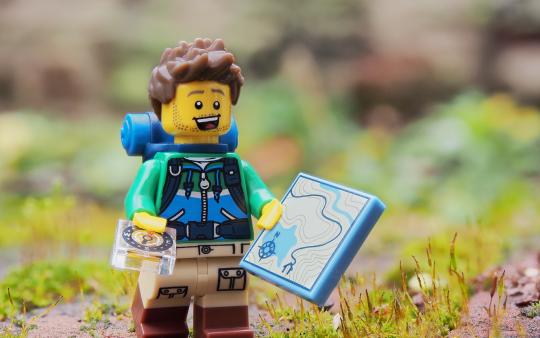Is your first and last memory of orienteering from junior high gym class? It’s time to bust out those running shoes and give the sport another go. This time, get the whole family involved! Here's why you should!
Orienteering is a sport that combines trail running and map-reading. Sometimes called the “thinking sport”, many Canadian clubs have rebranded under the banner of “Why just run?”—a web app and database designed for orienteering clubs to post and share information and events. And that’s the reason I love the sport so much—you have to use your brain (with the aid of a map and compass) to figure out the best route choice around a series of checkpoints. This takes your mind off the fact that you are running up hills or trudging through marshes, and the race is over before you know it!
Orienteering events take place on the weekend, all over the world, in all kinds of environments. It can be done at night, and in an individual, team, or relay format. There are rule-making bodies at the international and national levels, governing bodies at the regional level and clubs at the local level. In Scandinavia, for example, multi-day events in the summer attract thousands of competitors of all ages! Although not quite as popular as in Scandinavia, here in North America, chances are there’s a friendly club not far from you that puts on regular events in your local forest, park, or university campus.
When you head out on an orienteering course, you’re aiming to navigate through control points (marked by orange and white flags) from start to finish in the fastest time possible. Depending on your age and ability, you can expect to cover a couple of kilometres on the beginner course and be out for around 15 to 30 minutes. Any kind of map may be used, but the best ones are very detailed five-colour topographic maps (1:4,000 – 1:15,000 scale) developed especially for the sport.
Five reasons to give orienteering a go
1. It’s an excellent form of exercise.
Orienteering exercises all the muscle groups, physical and mental. As you improve, you progress to more challenging courses. But you don’t need to be fit to get started—it’s perfectly acceptable to walk the course and enjoy the experience of being immersed in nature. Researchers have discovered that the benefits of exercising in a natural environment far outweigh the results of exercise alone, making you feel more energized, attentive, happy, and calm.
2. Everyone is welcome.
Every event includes courses to suit participants of different skill and fitness levels from beginner to advanced. Younger children should be accompanied by an adult until they are comfortable map-reading alone, and beginners of all ages often prefer to go out with a partner. In our family, grandpa heads out into the woods with our 8-year-old son, and together they figure out the best route choices. There’s no age limit for learning new skills and it’s great family bonding time!
3. It’s inexpensive.
You need very little to get started: just some comfortable shoes (running shoes or lightweight hiking boots), a whistle, and a simple compass. Chances are you won’t use the compass very much in the beginning, but it’s useful to know how to take a basic safety bearing. At the event, you’ll be given a map with your course already marked on it and an electronic timing device (called an SI stick) to prove that you’ve visited all the checkpoints in the right order.
4. It comes in many flavours!
Although foot orienteering is the most common type of orienteering, there is also ski-O, bike-O, horseback-O, and even paddle-O! Wheelchair orienteering is an event designed for orienteers with limited mobility.
5. It’s a great way to explore new places and meet new friends.
Once you’ve tried a few local events, use your new-found navigation skills to venture further afield. Or find an event wherever you are on vacation and explore some new terrain. The basics of orienteering are the same everywhere so whether you are in Bermuda or in Europe, the maps and checkpoints will be familiar.

How do I get started in orienteering?
Go to an event! An organizer will be more than happy to give you some pointers before your first attempt. Find your local club and let them know you’re interested. There’s even a World Orienteering Day every May when more than 350,000 people around the world gather to take part in events!
Take the “Is orienteering for me?” quiz
þ I want to make my walk in the park more interesting
þ I’m tired of just running on the road
þ I like maps
þ I love exploring new areas
þ I’m looking for a new activity for my whole family
þ I’m looking for a friendly and welcoming community
þ I’m 8
þ I’m 80
þ I love the idea of mentally and physically challenging myself at the same time
þ I love getting outdoors
If you answered yes to any of the above questions then orienteering is for you!
Once you’ve tried it a few times, you’ll be eagerly looking for your next orienteering adventure!
Visit these orienteering sites to get oriented!






